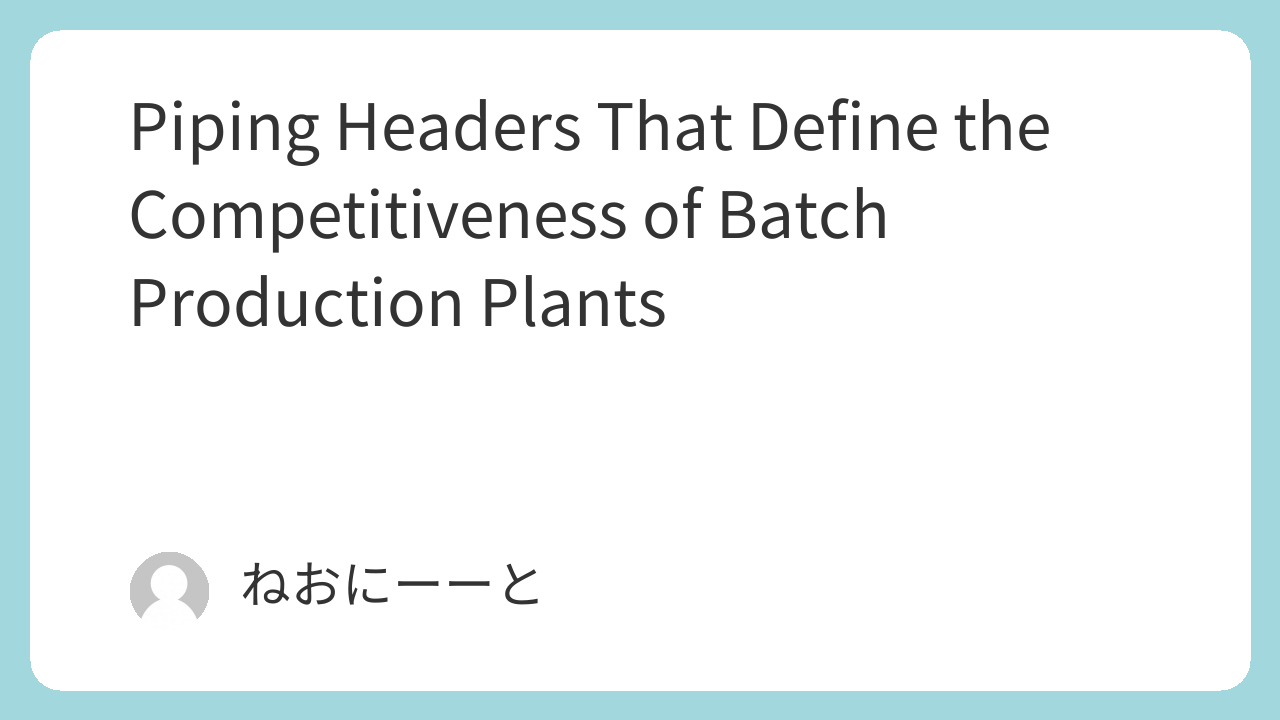In batch-type chemical plants, where a wide variety of products are produced in small quantities, production often requires switching between different products using the same reactor.
To achieve this, the plant’s piping system is sometimes configured with headers—shared manifolds that allow multiple lines to connect to the same equipment.
While they may look like simple pipe junctions, headers can actually determine how flexible, efficient, and competitive a plant can be.
This article explains the advantages and disadvantages of adopting piping headers in batch chemical plants.
Advantages of Piping Headers
1. Limited Reactor Nozzle Connections
In some reactions, multiple raw materials are fed into a single reactor. However, the number of nozzles available on a reactor is often limited.
For example, suppose a reactor has 10 nozzles used for purposes such as:
- Manhole – 1
- Level gauge – 1
- Inspection light – 1
- Baffles – 2
- Gas line – 1
- Powder feed – 1
- Liquid feed – 3
Even with ten, only three are available for liquid feeds.
When you need to introduce water, solvent, and reactants (often multiple reactants), the nozzles quickly become insufficient.
To solve this, multiple liquid lines are merged above the nozzle using a header configuration.
2. Easier Line Switching
Even when each product has enough nozzles, switching lines between different products can be labor-intensive.
With a header system, switching becomes far easier.
Otherwise, operators may need to manually connect or disconnect flexible hoses or short pipes, which risks exposure to residual chemicals or leaks.
Headers minimize such risks and operational effort.
For pumps, switching is even more common.
For example, one pump may send liquids to multiple destinations.
A header allows this operation safely and efficiently without having to break flanges or reconnect piping during operation.
3. Improved Product Quality
Headers also tend to improve product consistency—compared to manual switching via hoses.
However, care must be taken when multiple liquids merge before entering the reactor, as premature mixing can affect reaction quality.
The design decision of which liquids to connect to which nozzles is therefore critical.
Disadvantages of Piping Headers
1. Increased Risk of Leakage
Each additional joint, tee, or blind plate adds a potential leakage point.
In glass-lined systems, each header adds more fittings, increasing the chance of leakage through gaskets or damage to isolation plates.
If leaks occur, they can impact safety, environmental integrity, or product quality.
For highly hazardous materials, it’s safer to fully isolate unused lines.
2. Higher Maintenance Costs
Headers increase the complexity of piping near tanks and pumps.
When equipment requires replacement or maintenance, more pipes must be removed or reconnected, increasing both labor time and cost.
Even flexible-tube systems can have similar issues, but headers generally require more space and effort.
3. Space Constraints
As the number of headers increases, they occupy valuable space around reactors—areas needed for vertical or inter-floor piping.
While two or three headers may not be an issue, having five or six becomes a clear obstacle.
In actual batch plants, it’s not uncommon to see five or more headers around a single reactor.
Conclusion
Piping headers offer operational flexibility and convenience for batch-type chemical plants.
However, they also bring challenges—especially in maintenance, leakage management, and layout design.
A well-thought-out header system can significantly enhance plant competitiveness, but overuse or poor planning can just as easily reduce it.
The key lies in balancing flexibility, safety, and maintainability when designing your piping network.

Comments